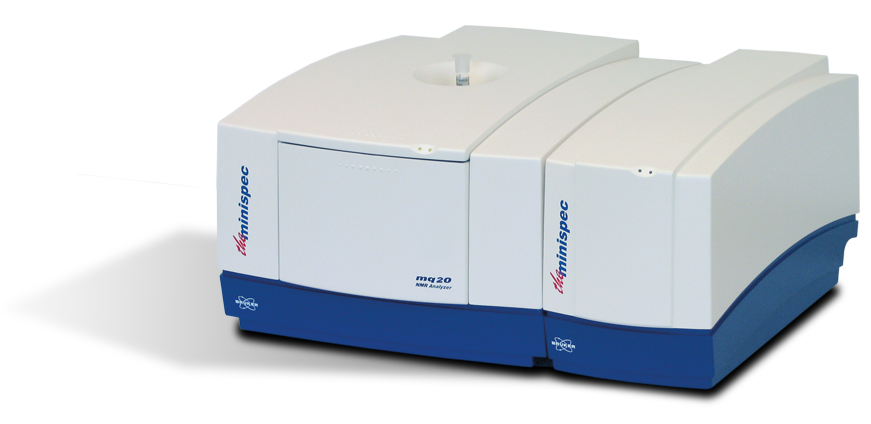Contrast Agent Analyzer


TD-NMR Contrast Agent Analysis
The minispec Contrast Agent Analyzer is used to study the effect of pharmaceuticals known as “MRI contrast agents” on the NMR relaxation of protons in water or fat. Contrast agents are used to enhance contrast in Magnetic Resonance images between tissues that otherwise would be difficult to differentiate. These are especially soft tissue of the central nervous, digestive, lymphatic and cardiovascular system, liver, breast and lung.
Design of a successful contrast agent requires conflicting pharmaceutical and MRI properties to be met at once: although metal ions like Mn^{2+} and Gd^{3+} may lead to a very good contrast enhancement, they need to be chelated because the applied concentrations of the ‘naked ions‘ are toxic.
The minispec mq-series of bench-top NMR instruments play a key role in characterizing and validating the properties of contrast agents. The task is to examine the T_1 and T_2 relaxation time shortening of fat and water protons by contrast agents. The fat and water protons are predominantly responsible for the MR image.
Features
Contrast Agent Analyzers:
- mq60 - for relaxation time analyses near the field of a 1.5 T Clinical MRI system
- mq20 - for relaxation time analyses near the field of a 0.5 T Clinical MRI system
- mq7.5 - for measurement of relaxation time parameters at 0.17 T
Benefits
- Win expensive MRI time
- Operates all common pulse sequences for T1, T2 relaxation time analysis, at a touch of a button
- Easy siting, benchtop
- Cryogen free permanent magnet
- Simple sample handling and measurement
- Attractive price compared to MRI systems
- Only small amount of expensive contrast agent required
- 21 CFR part 11 – compliant minispecPlus software is available
- IQ/OQ qualification of delivered instrument by trained Bruker service personnel
Specifications
Console with Broadband RF Electronics:
- Measuring frequency: 2 to 65 MHz
- Modulator: 0°, 90°, 180°, and 270° RF phase channels
- Transmitter: maximum power 300 W, linear power attenuation
- Receiver: digital phase sensitive detection via quadrature receiver; analogue and digital filters
- Pulse Programmer: resolution 20 nsec; Digitizer: 12-bit, 32K points per acquisition
Magnet Unit:
- Fields available: 0.17 T, 0.47 T and 1.41 T
Probe Temperature Options
- Fixed Temperature: Sample chamber temperature is regulated by magnet heating system at a temperature fixed between 35 and 45 °C
- Variable Sample Temperature, + 5 to + 50 °C (mq60), - 5 to + 65 °C (mq20) Information about a broader temperature range on request
System Requirements
- Footprint: 75 x 65 cm (WxD)
- System Weight: ~ 120 kg (depending on configuration)
- Operating Temperature: 18 °C min., 28 °C max.
- Humidity: 20 - 80%, non-condensing
- Voltage Range: 100 - 240 VAC Frequency Range: 50 - 60 Hz.
Options
- Autosampler for unattended operation on request. Barcode reader for sample tracking.
LabScape
Service & Life Cycle Support for Magnetic Resonance and Preclinical Imaging
Bruker’s commitment to provide customers with unparalleled help throughout the buying cycle, from initial inquiry to evaluation, installation, and the lifetime of the instrument is now characterized by the LabScape service concept.
LabScape Maintenance Agreements, On-Site On-Demand and Enhance Your Lab are designed to offer a new approach to maintenance and service for the modern laboratory